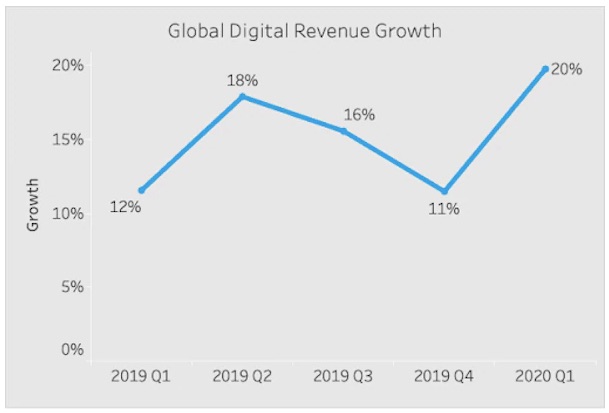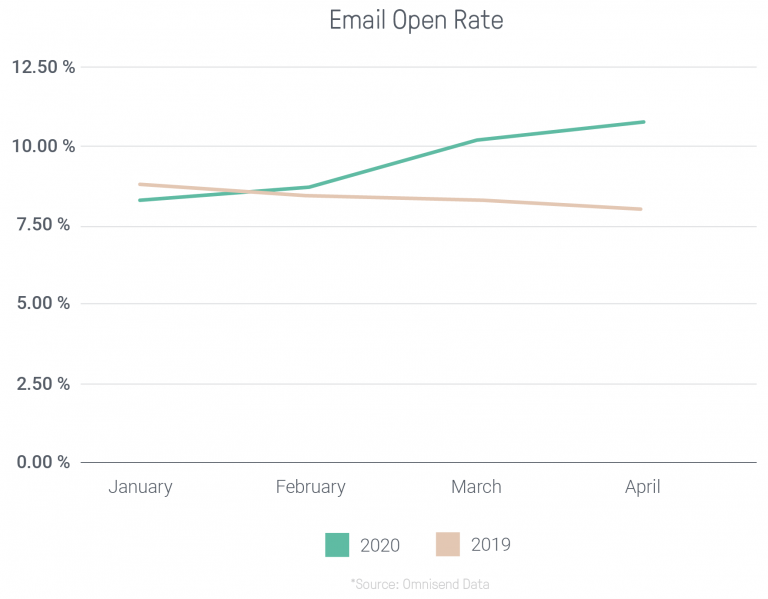Unsurprisingly, more people are working from home today than ever, but the real question is, is this new trend for the better?
Is this disruption good for business?
Gartner reported that 88 percent of organizations have encouraged or required all their employees to work from home due to the virus, while 97 percent canceled work-related travel.
These stats prove that more people are working remotely than ever due to the pandemic.
Surprisingly, it’s made businesses better for it. Wondering how?
Well, we’ll get to it in a bit.
First, let’s look at how the pandemic is affecting businesses across the world.
Impact of the Pandemic on Businesses

Ever since the World Health Organization (WHO) declared the coronavirus a pandemic, a considerable part of our lives has been disrupted in ways it might not be easy to get back.
Even businesses.
Here are six ways this pandemic has disputed businesses:
- Google search for travel tanked 33 percent year-over-year in May 2020
- During the lockdown, 39 percent of global customers bought from new brands, and 88 percent of those shoppers plan to stick with these brands
- Overall, consumer spending dropped by 40 percent in March through June 2020 compared to the same period in 2019.
- Retail sales in the US fell by 8.1 percent in Q2 2020, the worst decline since Q2 2009 during the financial crisis. However, eCommerce retail sales grew by 25 percent during the same quarter.
- Econsultancy also reported that UK SMEs saw an average 28 percent fall in revenue between March and May. Another estimate puts the UK’s job loss at nearly 125,000 within the first eight months in 2020
- ONS’s employment data shows that 250,000 UK workforce was out of work by July 2020, and received no payment because of the pandemic.
There’s no going around it. The pandemic devastated businesses.
Apart from forcing a large percentage of the workforce to lose their jobs, the pandemic has also been largely responsible for wiping out a large chunk of retail sales. Household income numbers have fallen. Business revenues have gone down and a bunch of other unpretty things.
Though these realities might drive someone up the wall, we can find solace in the silver lining.
1. A Surge in eCommerce Activities
Analysis of studies from multiple sources has shown a significant shift in consumers’ buying behavior. The worldwide eCommerce traffic grew by 20 percent in Q1 and 30 percent in the first half of the year.

Findings from Waitrose reveals that since the coronavirus outbreak, 77 percent of British consumers now shop part of their grocery online. That number grew from 61 percent in 2019.
This means that the pandemic is driving eCommerce activities and reshaping purchasing behaviors.
According to SEMRush, when compared to the previous month, Shopify, one of the world’s leading eCommerce platforms, saw in March an influx of over 7.3 million site visits, with searches for “Shopify free trial” growing by 89 percent the same month.
To put this in perspective, about 7.3 million new businesses were seeking to build their online stores.
Of course, it is safe to attribute all these surges to the pandemic and the subsequent lockdown that had forced many people to spend more time at home than before.
2. Accelerated Decision Making

Decision making is critical to the success of any business, and unfortunately, a lot of businesses sulk at this.
In a recent global survey by McKinsey, only 20 percent of the respondents say their organizations excel at decision making. This means 80 percent of participants are not confident in the quality of their organization’s decision making.
There’s more:
A majority of the respondents in the same survey agree that much of the time they devote to decision making is used ineffectively.
In short, employees see slow decision making as poor decision making.
But there is good news.
Working from home, social distancing, and the newfound love for technology are accelerating the rate businesses make decisions today.
According to Zoom, daily meeting participation on their app shot up to 200 million in March and rose to 300 million the next month. This is massive when compared to 10 million in December 2019.
It is yet to be known if businesses are compromising quality to make quicker decisions. Still, the truth remains that working from home has accelerated the rate businesses are making decisions.
3. Schools Scramble for Online Learning
In March, the Italian government contemplated moving the country’s entire school system online. The Education Minister contacted Google to learn if their software could handle that.

After several days of working on the idea, Google delivered. A few months later, the demand for online learning grew across the world.
The scramble for e-learning has begun.
According to UNESCO data, school closures in 195 countries affected about 1.5 billion learners as of mid-April. This number dropped to 1.3 billion learners in 186 countries towards the end of the month.
In many countries where learning institutions are shut-down, schools deploy e-learning—capabilities to reconnect their students to the classrooms and provide a sense of academic continuity.
Data shows that Google Classroom has doubled active users to more than 100 million since March.
If there is one lesson the coronavirus pandemic has taught the world, it’s e-learning is inevitable.
4. Businesses Explore Multiple Marketing Channels
With more people working from home than ever, the pandemic has limited the customer’s physical interaction with brands.
This is more devastating for businesses that rely on direct interactions with their customers.
The shrink in customer touchpoints will force brands to compete aggressively for attention. Businesses must explore alternative customer engagement channels to thrive.
Look at eCommerce.
- More online stores have gone live in just a few months
- Email volumes have gone up
- Content creation is on the rise
At first, these changes might seem like costs, but the “post-COVID” impact is already showing positive signs.
Email open rates saw a 13.64 percent lift. The year-over-year performance of open rates before the pandemic was 2.44 percent, that number has jumped to 31.54 percent.

In the same period, email conversions have also gone up 17 percent.
But it’s not just email marketing. Content marketing has been on the rise as brick-and-mortar store owners are starting to use blogging to grow.
More so, Hubspot’s study reveals that marketers that prioritize blogging are 13 times more likely to achieve a positive ROI.
Multiple studies show that brands that blog enjoy a 600 percent higher conversion rate than those that don’t. Moreover, content marketing can generate about three times more leads per dollar spent than traditional marketing.
Here’s the kicker:
Content marketing costs 62 percent less than traditional marketing.
5. Businesses Save $11,000 for Every Employee That Works From Home

A study by Global Workplace Analytics shows that a typical employer can save about $11,000 per year for every person who works from home half of the time.
That is not all.
The same organization estimated that the work-at-home initiatives would save U.S employers over $30 billion a day in lost productivity during the COVID-19 crisis.
Working from home is not a bad idea.
Imagine what a business could do with $11,000 annually for every employee that worked from home, just half of the time.
The same study found that an employee can save between $2,500 and $4,000 a year working remotely half the time and more if they work full time.
This arrangement is an obvious win-win for both employers and employees.
6. Local Farmers Embrace Direct-To-Buyer eCommerce
Local farmers have always sold most of their farm produce to the HORECA (hotels, restaurants, cafes). But the pandemic threw up a huge disruption that left farmers scrambling for new markets.
As rightly captured by Harvard Business Review, the pandemic has spurred direct-to-buyer eCommerce by farmers. These farmers are pivoting their business to attract homebound buyers with the promise of fresh, organic farm produce.
Some farmers are setting up shop on Shopify, and the platform is seeing more buying and selling activities happening within 15-mile distances.
This switch to homebound buyers has, at least, three positive effects:
- Farmers will remain in business because, well, people must eat
- Open the opportunity for more investment in logistics, IT, and marketing
- Creates new jobs for people who might be out of work due to the pandemic
In the words of Beckie Gurley of Chesapeake Farm,
“We did a complete 180. We went from selling nearly 100 percent to restaurants to 100 percent home deliveries. Our volume has increased by tenfold. We have probably gained close to one thousand new customers in the past two weeks.”
The pandemic has helped local farmers discover a new market. Will this trend continue post-pandemic? I’ll say, most probably.
But only time will tell.
7. Aggressive Digital Transformation
West Monroe’s executive, Greg Layok, says he’s noticed growing investor interest in long-term video conferencing and virtual collaboration tools. Greg says that investors who would otherwise renege investing in these tools are now committing to them.

Just like Greg, you’d agree that the pandemic is forcing businesses to embrace digital transformation.
Working remotely means businesses either digitalize critical operations and processes or die an agonizing death.
Before the pandemic, 89 percent of organizations have plans to adopt a digital-first business strategy, but only 44 percent have fully embraced it.
Look at the stats today:
- Shopify saw an influx of over 7.0 million site visits as businesses run to them to set up online stores to sell digitally to their customers.
- Zoom saw an unbelievable 2,900 percent boost in daily meeting usage from December 2019 to April 2020 as business executives leveraged the app to manage meetings.
- E-learning technology saw a massive leap as schools scramble to reconnect their students back to classrooms digitally.
- Businesses engage in digital marketing channels as they push to reach more customers online.
- Local farmers embrace direct-to-buyer eCommerce to sell their produce
It’s clear: the pandemic is forcing businesses to embrace digital transformation.
Wrapping It Up
While the coronavirus pandemic has ushered us into depressing realities, working remotely has given us the silver lining.
A surge in eCommerce activities, aggressive digital transformation, accelerated decision making, new market for local farmers, unprecedented deployment of remote learning capabilities are positive trends we rightly owe to the pandemic.
It’s not all doom and gloom. Look at the bright side.


